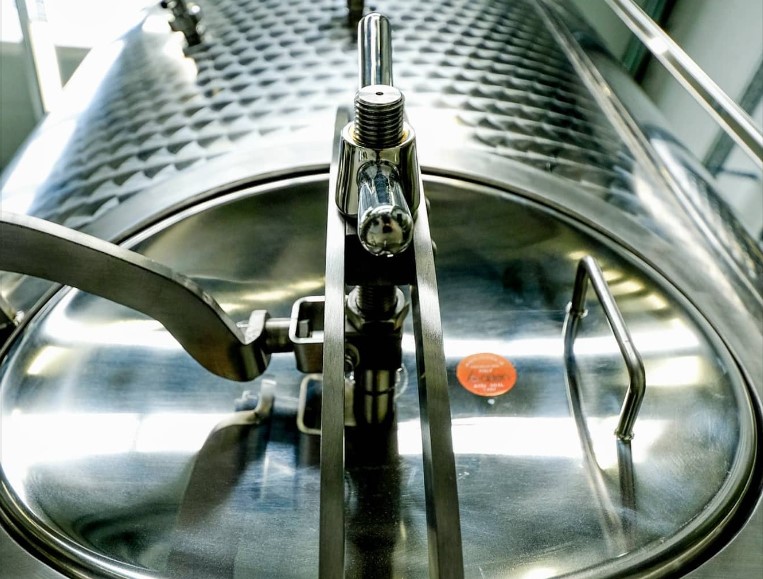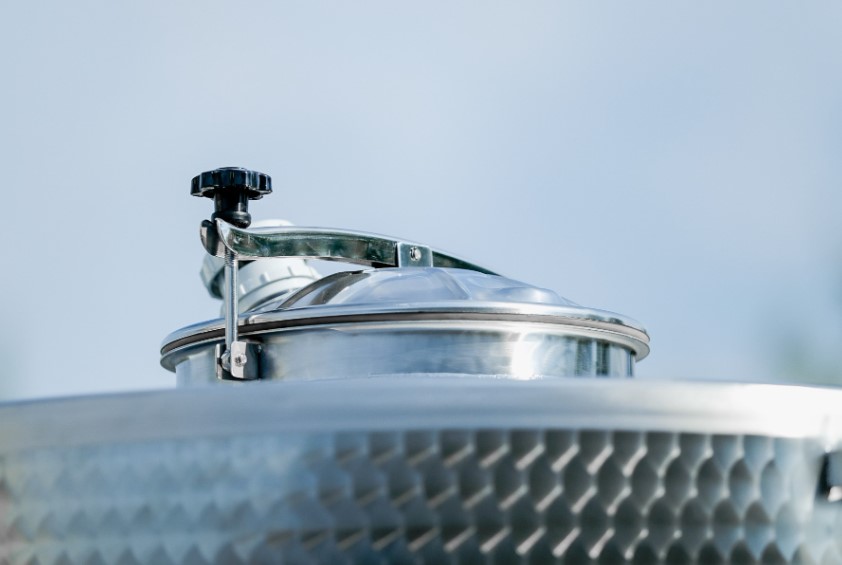Revolutionizing Winemaking with Stainless Steel Tanks
Emile Peynaud, a key figure in winemaking, advocated for the use of stainless steel tanks in the early 1960s after witnessing their success in the dairy industry. Chateau Haut Brion, a renowned Bordeaux producer, embraced this innovation in 1961, becoming one of the pioneering wineries worldwide to adopt stainless wine tanks. The numerous benefits offered by these fermentation containers quickly led to their widespread adoption across the winemaking industry.

Influence of Fermentation Temperature on Wine Style
During the fermentation process, aside from alcohol and carbon dioxide, heat is generated. For optimal fermentation, temperatures ranging between 38 and 90 degrees Fahrenheit are crucial. The fermentation temperature significantly shapes the final wine’s style. Red wines commonly ferment at higher temperatures (75 to 85 degrees), enhancing flavors and aromas. In contrast, white wines prefer cooler temperatures (50 to 68 degrees) to preserve delicate varietal characteristics.
Precision Temperature Control with Stainless Steel Tanks
Stainless steel tanks excel in regulating fermentation temperatures. Equipped with a surrounding chamber for coolant, these tanks provide winemakers with precise control over the fermentation process. This control is vital, as warmer temperatures can intensify flavors, suitable for red wines but detrimental to the balance of white wines. Cooler temperatures, efficiently maintained by stainless steel tanks, help retain the nuanced flavors and aromas valued in high-quality white wines.
Efficient Cooling and Condensation Management
The design of stainless steel containers facilitates effective cooling during fermentation. The tanks feature a coolant-filled chamber around them, and winemakers can use controls to uphold specific temperatures. Notably, the cooling process results in condensation forming on the tank, indicating the successful cooling of the liquid within.
Versatility and Functionality of Stainless Steel Tanks
Stainless steel tanks play a multifaceted role in winemaking, offering convenience in preventing oxidation, facilitating fermentation monitoring, and accommodating various winemaking tools. Equipped with closed tops, these tanks minimize air contact during fermentation, and a small lid on the top allows winemakers to oversee the process and add ingredients, with the option to punch down the cap through this opening. Additionally, these tanks feature attachments for hoses, enabling actions like pumping over the cap, racking the wine, and transferring it to different containers.
Diverse Sizes and Shapes of Stainless Steel Tanks
With a broad range of sizes, stainless steel tanks can hold anywhere from 250 to 200,000 gallons, often exceeding 20 feet in height. The tanks used for fermenting white wine are typically taller and skinnier compared to those used for red wine. The aspect ratio, with white wine tanks being up to four times taller than their width, and red wine tanks rarely exceeding twice the height, significantly influences the winemaker’s ability to control fermentation temperature.
Neutrality and Longevity of Stainless Steel
Stainless steel emerges as a neutral player in winemaking, distinct from oak barrels, imparting no characteristics into the wine. This neutrality extends its utility beyond fermentation, as these containers serve as effective holding tanks during the constant racking process. Stainless steel’s inert nature proves advantageous for cold stabilization, where cooling prompts sediment to settle, enhancing wine clarity by removing tartaric crystals and debris. Moreover, these tanks boast a longer useful life compared to other fermentation containers, offering economic benefits over the long term.
